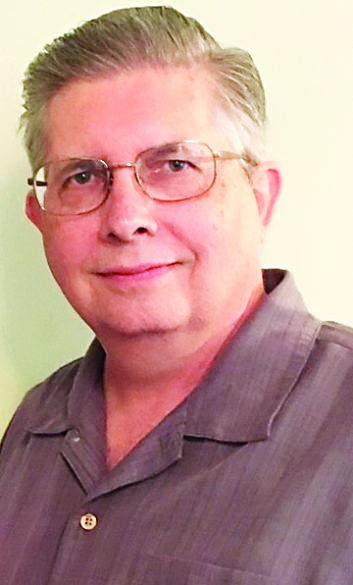Reflections on Life
By Melvin Arrington
Among the saints with an August feast day is Santo Domingo de Guzmán – St. Dominic (1170-1221) – founder of the Dominican Order, the Order of Preachers (O.P.). Born in North-Central Spain, he began his religious life as a contemplative, but when he was in his mid-30s Pope Innocent III sent him to the south of France on a preaching campaign in an effort to halt the spread of the Albigensian heresy sweeping across the land. The Albigensians taught that all material things, including the body and human sexuality, were evil; they saw extreme austerity as the only way to achieve perfection. Dominic preached relentlessly against these false doctrines, countering the bizarre practices of the heretics by walking barefoot across the countryside and enduring other mortifications, all the while praising God.
Dominic and the friars who gathered around him devoted themselves to intellectual life and preaching the Gospel. Formal papal approval for the Order came in 1216, but some 10 years earlier in France Dominic had already organized a group of women converts from Albigensianism, establishing a convent in Prouille. So, interestingly, Dominican sisters actually predate the friars.

As stories arose about his life, the line separating historical fact from tradition and legend gradually became blurred. One example concerns how he got his name. While on a pilgrimage to the shrine of 11th century Spanish saint Domingo de Silos, Dominic’s mother had a vision of a dog leaping from her womb and carrying a torch that lit up the world. Later, when she gave birth to a son, she named him Dominic, in honor of the namesake of the abbey she had visited. Thus, the Dominicans became known as the Hounds of the Lord, in Latin domini canes.
Illustrative of Dominic’s charity is this anecdote from his student days, during a time of famine in Spain. In an effort to alleviate suffering, he sold all his possessions, including his cherished books, giving the proceeds to the poor. His life of self-denial and personal holiness would be totally foreign to today’s self-absorbed, pleasure-seeking culture.
Dominic is often associated with the origin of the Rosary. According to tradition, the Virgin Mary, appeared to him in a vision and gave him the first Rosary. Early on, the Dominicans were the ones largely responsible for spreading this Catholic devotion throughout Europe.
Concerning his love of books and learning and his devotion to Sacred Scripture, it was said that he always carried copies of Matthew’s Gospel and Paul’s letters wherever he went and that he knew all those texts by heart. Through prayer and study he and his friars equipped themselves for teaching and preaching, thereby combining the contemplative life with the active, something that had not been done before on such a broad scale.
I feel connected to this saint in several ways, not the least of which is that I was born in St. Dominic’s Hospital in Jackson, not the sprawling complex off I-55 at Lakeland, but the original one, the former Jackson Infirmary, located on North President Street, just off Capitol Street. The Dominican Sisters of Springfield, Illinois, acquired the old hospital in 1946. In 1954 operations moved to the current location, where my sister was born.
My mother, a nurse, spent much of her career at St. Dominic’s. When I was a little boy, I would often go with Daddy to the hospital to pick her up after her shift. When we entered the building, I would inevitably encounter one of the sisters moving down the hallway in our direction at a rapid pace. I just knew she was coming to get me. In those days a Dominican nun typically wore a voluminous, free-flowing tunic, topped off with a headpiece that was imposing, to say the least. The sisters looked like nothing I had ever seen before, and I was scared to death of all of them.
Mama had several surgeries and procedures performed at St. Dominic’s and Daddy passed away there after suffering a massive heart attack. So, my family has long had close ties to the hospital.
Another link with Dominic concerns the fact that he was Spanish. During college and graduate school, I majored in Spanish language, literature and culture. Before I became Catholic, I was moved by the holiness and spirituality of the Spanish saints I read about. Those studies played some role in my conversion, as did the strong faith of my wife, who received her first 12 years of formal education from the Adrian Dominicans in Detroit.
In a recently published study, Saint Dominic’s Way of Life: A Path to Knowing and Loving God, Patrick Mary Briscoe, OP, and Jacob Bertrand Janczyk, OP, offer valuable insights into the saintly path followed by this great man of God, whom they characterize as a “hidden saint.” Other holy men, like Francis of Assisi and Ignatius of Loyola, were more famous, in part due to their striking conversion stories and their influential writings. Dominic, on the other hand, grew up in the church, and he left behind practically nothing in the way of written texts. Nevertheless, his legacy is formidable, especially when one considers his Order’s contributions across the centuries and around the world.
When Pope Honorius III officially confirmed Dominic’s preaching mission, he encouraged him to strive to spread the Gospel by remaining “insistent in season and out of season.” He faithfully carried out this mandate until the day of his death, which occurred 800 years ago, on Aug. 6, 1221. We celebrate his feast day in the summertime, on Aug. 8, but he is truly a saint for all seasons.
(Melvin Arrington is a Professor Emeritus of Modern Languages for the University of Mississippi and a member of St. John Oxford.)
